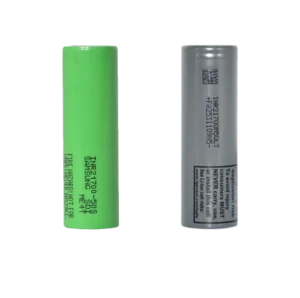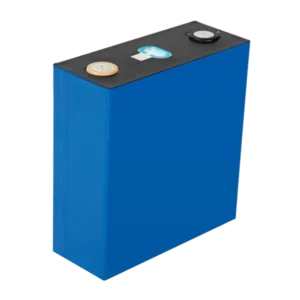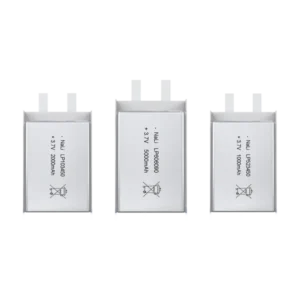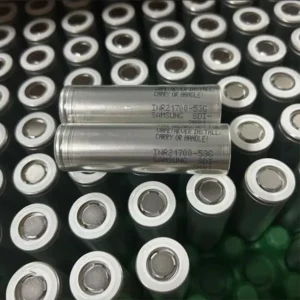Lithium-ion cells are now popular in every aspect of life. Based on their shape, lithium-ion batteries are mainly categorized into cylindrical, prismatic, and pouch lithium-ion cells. Understanding lithium-ion cell sizes is key to choosing the right cells. It also helps in boosting their performance. This guide will give a comprehensive understanding of lithium-ion cells. It includes lithium-ion cell sizes, their applications, and how to choose the right lithium-ion cells. Here is some detailed information.
Types of lithium-ion cells
1. Cylindrical Lithium-ion Cells
Nowadays, cylindrical lithium-ion battery cells have widespread applications. The cylindrical shape spreads pressure evenly inside and out. It also resists shock and expansion well. Furthermore, cylindrical batteries are key to today’s portable energy. They balance performance, cost, and safety. They are the “basic units” of countless complex battery packs.

Excellent Cell Consistency
Cylindrical batteries have a standard size worldwide. This standardization makes it easier to produce them in large quantities using automation. For example, their capacity and internal resistance are close. This characteristic makes them easy to screen and group. Additionally, highly automated, standardized production lines bring unparalleled consistency and low costs.
Strong Structure and Long Life
The cylindrical shape is strong. It can handle internal pressure well. Besides, the charging and discharging processes generate gas inside, increasing the pressure. The cylindrical steel shell can effectively withstand this internal pressure and resist deformation. The strong design reduces shape changes in the battery cell over time. Therefore, this characteristic helps cylindrical lithium-ion cells to achieve a longer service life.
High Energy Density
Cylindrical batteries lead the industry in energy density. This is due to better chemistry and compact winding structures. The new 4680 battery uses tab-less technology. This change lowers internal resistance and boosts energy density.
Good Heat Dissipation Performance
Compared to other shapes, cylinders have a higher surface area-to-volume ratio. This means that when during pack assembly, the contact area between the battery and the cooling system is larger. This structure helps with heat dissipation. It makes it more even and efficient, so local overheating is avoided.
Relatively Low Space Utilization
The process of arranging cylindrical batteries into packs creates gaps between the cells. So, it wastes some space.
2. Prismatic Lithium-ion Cells
Prismatic lithium-ion cells are usually square, hard-shell packages made of aluminum or steel. We can customize prismatic Li-ion cells to fit the shape of your vehicle or equipment. This method uses space more effectively. It creates a smaller pack structure and offers high energy density. But there are many models, and the degree of standardization is low. Additionally, the production process is complex and the cost is relatively high. If the design is flawed, swelling during charging and discharging may be worse than in soft packs.

3. Pouch Lithium-ion Cells
Pouch lithium polymer battery cells have an outer shell made of an aluminum-plastic composite film. They are naturally “soft.” Besides, they have good safety. When thermal runaway happens, it often bulges and cracks. It doesn’t explode like a hard-shell battery cell. Additionally, they are lighter than other battery types. You can customize their shapes as needed, and they’re great for ultra-thin designs. However, sharp objects can easily pierce them. They need extra structural parts for support and protection. Also, they have strict requirements for the grouping process.

Standard Lithium-ion Cell Sizes
1. Cylindrical Lithium-ion Cells
A cylindrical lithium-ion battery’s name has five digits. The first two digits show the diameter. The middle two indicate the height. The last digit is always 0, which means a cylindrical shape. Knowing standard lithium-ion cell sizes is key to choosing the correct battery for you. Here are some standard cylindrical lithium-ion cell sizes and battery cell dimensions.
| Model | Dimension (mm) | Capacity (mAh) | Common Uses | |
|---|---|---|---|---|
| 14500 | 14 x 50 | 800 – 1000 | Small appliances, flashlights | |
| 18650 | 18 x 65 | 2000 – 3500 | Laptops, power banks, power tools, early Teslas | |
| 21700 | 21 x 70 | 4000 – 5000 | Electric bicycles, new Tesla models, high-end home appliances | |
| 26650 | 26 x 65 | 4500 – 5500 | High-power tools, solar energy storage lamps | |
| 32650 | 32 x 65 | 5000 – 6500 | Industrial equipment, large-scale energy storage | |
| 32700 | 32 x 70 | 6000 | Outdoor power supply, intelligent robot | |
2. Prismatic Lithium-ion Cells
Unlike cylindrical batteries, prismatic and pouch lithium-ion batteries lack a unified naming convention. Moreover, their sizes and capacities vary widely.
Prismatic lithium-ion cells have a hard shell, a stable structure, and are easy to stack. Here are some sizes and capacities.
| Battery Type | Dimensions (mm) | Capacity | Common Uses | |
|---|---|---|---|---|
| Small polymers | 3.5 x 34 x 50 | 500-800 mAh | Smartphones, tablets | |
| Medium-sized lithium iron phosphate | 27 x 70 x 145 | 20 Ah | Home energy storage, electric bicycles | |
| Large electric vehicles | 40 x 140 x 220 | ≥100 Ah | Electric vehicle power batteries | |
3. Pouch Lithium-ion Cells
The packaging process for pouch lithium polymer battery cells employs aluminum-plastic laminate film. This type of packaging is lightweight, customizable in shape, and highly space-efficient.
Typical scenarios include:
- Bluetooth headsets need compact sizes, like model 303450.
- Tablets and drones require high energy density but have limited space. Common models include 4550100 and 6550100.
Why Is It Important to Follow Standard Lithium-ion Cell Sizes?
1. Compatibility and interchangeability
Standard sizes ensure batteries from various makers fit and work well in devices designed for them. This offers many options for device makers and buyers. It also guarantees spare parts are available.
2. Scaled production and cost-effectiveness
Standardization enables large-scale, automated, and centralized battery production. This production mode boosts efficiency and lowers costs. As a result, the final product is cheaper for consumers.
3. Safety
Standard sizes follow strict safety specifications and testing standards. Batteries built to these sizes already account for risks such as overcharge, over-discharge, short circuit, and thermal runaway in their design and include built-in safety features that enhance the product’s overall safety.
4. Simplify design and supply chain.
Device makers can streamline product design and accelerate R&D by using standardized battery cells. Getting standard battery cells leads to a steadier supply chain, reduced risks, and easier inventory management.
Applications of Lithium-ion Cell
Different lithium-ion cell sizes have various applications. Here are some cases.

Cylindrical Lithium-ion Cell
- Small 10440 batteries (10mm x 44mm) are commonly used in mini flashlights or speakers.
- 14500 batteries (14mm x 50mm) are the same size as AA batteries and are often used in wireless speakers and digital cameras.
- 16340 batteries (16mm x 34mm) are commonly used in high-intensity flashlights due to their smaller capacity.
- The most common 18650 battery (18mm x 65mm) is widely used in laptops, power tools, and early electric vehicles due to its balanced capacity and power.
- The larger 21700 battery (21mm x 70mm) has become the first choice for electric cars. For example, Tesla Model 3 and high-power energy storage devices use 21700 batteries. This is because these batteries have a higher single-cell capacity.
- The 26650 battery (26mm x 65mm) has a larger capacity and is suitable for electric bicycles and solar energy storage systems.
- The new 4680 large cylindrical battery (46mm x 80mm) powers Tesla’s latest electric vehicles and big energy storage systems. Its high capacity makes it a great choice.
Prismatic Lithium-ion Cells
Prismatic batteries are rectangular and typically housed in aluminum. They can provide mechanical stability and good thermal management. Besides, prismatic batteries’ efficient space utilization makes them a popular choice for applications such as electric vehicles, mobile power supplies, and large consumer electronics.
Pouch Lithium Polymer Battery Cells
A pouch lithium polymer battery cell is encapsulated in a lightweight aluminum-plastic film. Its shape is very flexible and can be customized into special shapes such as ultra-thin, ultra-narrow, or curved. So, you can find them in smartphones, tablets, and wearables like smartwatches and rings. They’re also in other devices that aim for slim designs and specialized spaces.
How to Choose the Right Lithium-ion Cell Size?
Space and Shape
If the device’s internal space is regular and sufficient, standard cylindrical or prismatic lithium-ion battery cells are an economical choice. However, if the space is tight or the shape is unique, like a curved or C-shaped shape, consider using a custom lithium-polymer pouch battery cell.
Energy Density and Capacity
Generally speaking, cylindrical batteries have higher energy density at the same volume. In contrast, pouch lithium polymer and prismatic lithium-ion battery cells fit well in tight spaces. This characteristic helps boost the energy density of the whole battery pack.
Mechanical Strength and Safety
The metal shell of cylindrical batteries is tough. So it strongly resists impact and vibration. However, pouch lithium polymer battery cells require additional structural support. Moreover, the shell is easily punctured by sharp objects. So, it is necessary to focus on protection during the design phase.
Costs
Cylindrical batteries like the 18650 often cost the least per watt-hour. This is because of their large-scale production and advanced technology. In contrast, pouch lithium polymer battery cells usually cost more. This is because they use complex materials and have intricate manufacturing processes.
Conclusion
You can select the appropriate lithium-ion cell sizes based on your needs. Choose standard-sized cylindrical batteries if you have a limited design space. They offer cost-effectiveness, a stable supply chain, and easy replacement. If you’re short on space, want a unique design, or need a lighter battery, consider custom prismatic or pouch lithium polymer battery. Just be ready for the costs and design challenges that come with them.
